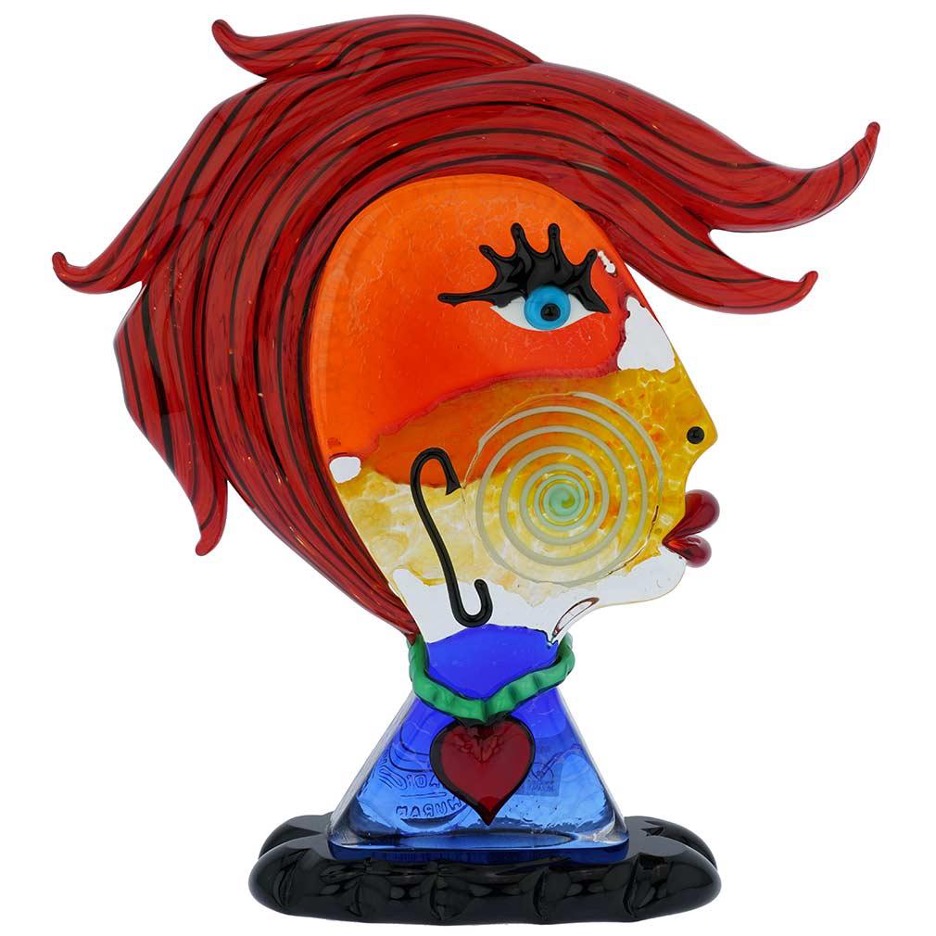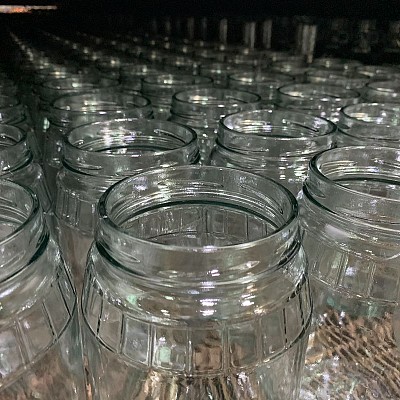When you think of a sculpture you typically imagine large and heavy marble or bronze creations. While beautiful, those require months or sometimes years of hard work for the sculptor to extract the shape and the vision they have out of the hard stone. Glass, on the other hand, is a material allowing for a maximum expression of the artist’s sculptural idea in much shorter time. Glass is a medium that has captivated and ignited human imagination for thousands of years. The craft of manipulating this malleable transparent substance into shapes that seem to defy both physics and logic and let fantasy soar is ancient yet still thriving. From the earliest historical attempts at glass-making to contemporary movements that are opening up new horizons in art and technological innovation, glass sculptures open up the world of inventiveness and virtuosity.
History Of Crafting Glass Sculptures
The use of glass as a material to create sculptures dates back to ancient civilizations like Mesopotamia and Egypt, where the first basic glass objects were crafted over 4,000 years ago. Originally, glass was used solely for utilitarian objects to create vessels for storage, beads, and tiles. It wasn’t until the Roman era that glassmaking techniques began to evolve and glass artisans turned to the creation of decorative objects. This led to experimentation with techniques to achieve desired color combinations and shapes.
The Renaissance marked a turning point, where the skills of European craftsmen had advanced to such a level that they could produce not just functional pieces but ornamental glasswork. From stained glass windows in impressive cathedrals to delicate Venetian goblets and later on to incredible multi-tier glass chandeliers crafted by Murano masters, glass craftsmanship reached new heights. In the 16th and 17th century scientific discoveries led to chemical and technological breakthroughs and combined with evolution in artistic vision away from purely religious subjects and into philosophical and humanistic themes. This unique combination resulted in the birth of art glass in Murano, Italy and made it a premier glassmaking center in the world, which it remains today.
Making Glass Sculptures: Techniques and Methods
Creating a glass sculpture is both an art and a science, relying on technical know-how and highly specialized craftsmanship. Glass sculptures are typically created using one of the following methods:
- Blown Glass: Perhaps the most traditional method, glass blowing involves gathering molten glass on one end of a blowpipe, blowing into the other end of the pipe to expand it, and shaping it through the use of basic tools.
- Casting: This process involves making a mold and pouring molten glass into it, making the whole process faster and easier and allowing for production of multi-layered designs.
- Pâte de Verre: A method involving the casting of glass paste. This is often used to craft detailed forms and complex colors.
- Lampworking: This method is utilized for smaller glassware like jewelry and beads, but also used to make intricate smaller glass sculptures. In lampworking the artisan uses a small flame (now gas-powered) to melt special glass rods and shape them into forms while hot using small tools.
- Fused Glass: This approach involves layering flat pieces of glass into a specific design and firing them in a kiln to produce a singular piece, often employed in more abstract pieces.
- Coldworking: A method that involves no heat; instead, the glass is shaped by cutting, grinding, and polishing.
Glass Art Trends, Movements, and Geographical Differences
Glass art, much like any other art form, has gone through various trends and movements. From its origins in Murano, Italy, glass workmanship has spread far and wide. Eventually, art glass flourished in other European countries such as Austria, France, Czech Republic, and Sweden as well as in other continents in places like the United States and Brazil. Glass sculptures like no other type of glassware reflect these trends and showcase the best that has come out of them. Prominent trends in art glass that emerged in the 20th century include:
Studio Glass Movement
Originating in the mid-20th century, this American-led movement focused on a glass artisan turning into an artist in his or her own studio, and emphasized individuality and personality in glass craftsmanship. Hence it was mainly about setting up small-scale glass workshops as opposed to industrial processes prevalent in China and elsewhere for glassmaking. Such focus on the ideas and talents of the individual artist is enabling glass artists to let their fantasy run free as well as join forces in sharing technical knowhow and expertise.
Art Nouveau
- Much like in the world of architecture, Art Nouveau signaled the arrival of new forms and designs in art glass. The emphasis on flowing forms, many inspired by nature, worked particularly well in glass-blowing where artists were not constrained by the limitations of the material they used.
- Abstract Expressionism: An art movement often associated with painting, but like many others it found its way into glass art. Mainly characterized by abstract shapes and bold color palettes.
- Minimalism
- In a fight against commonly accepted standards of beauty, in the 20th century contemporary artists turned to exploring the deeper meaning of things away from their outward appearance. In this sense, minimalistic art glass pieces feature simplified, geometric shapes and simple, bold, or monochrome palettes. Showcasing abstract forms and an interplay of basic colors, minimalistic glass sculptures focus on form over ornamentation.
Geographically, different countries have contributed unique glass vase styles and techniques to the world of glass art. Now it’s fairly easy to determine the geographic origin of the glass vase based on these characteristics. In Sweden, in line with the local aesthetic tastes in furniture, home design, art and architecture, artists created sleek, modern vase designs, leaning towards minimalism. In Czech Republic, drawing on the heritage of Bohemian trends in the Austrian-Hungarian Empire, the local style of glass craftsmanship is known for its rich ornamentation, 24Kt gold accents, and beautiful colors. The Czech Republic is also known for its crystal, which is leaded glass. Finally, as in many other areas, the United States is leading the way in innovation, evolution of art glass, and pushing boundaries within the Studio Glass movement.
Murano Glass - The Origin Of All Art Glass
When discussing glass sculptures, Murano Glass from Venice, Italy always takes the center stage. It is also the origin of glass-making in the modern world and the source of inspiration for all glass artists now and for centuries before. For over seven centuries, the island of Murano just off the coast of Venice has been the main center of glassmaking in the world. Recently Unesco designated Murano Glass along with many other traditional European crafts as a protected art form. Importantly, the techniques and processing of glass craftsmanship on Murano island remained almost the same as centuries ago, and the island is dominated by small factories and workshop where artisans specialize in unique glassware styles and specific techniques.
Murano Glass Techniques
Murano glass is primarily made using traditional glass blowing method, however, glass sculptures crafted by Murano artisans use a wide range of specialized techniques and are sometimes made with lampworking method over a small flame. What sets Murano Glass apart from glassware made elsewhere is the quality of craftsmanship, attention to every detail of the form and design, as well as unique rich colors which artisans mix and combine in very imaginative ways. Millefiori, Sommerso, and Filigrana are some of the best-known techniques invented by Murano glass masters and used to make sculptures.
Murano Glass Sculpture Is A Great Investment
Murano Glass sculptures are so varied in styles, subjects, and color patterns that you can find one to fit any interior design, from minimalist to avantgarde to formal and classic. There are glass sculptures that represent lovers, sailboats, animals and birds, flowers and plants, and typical Venetian subjects such as gondolas, masks, or Goldonian figures in traditional dress of 18th century Venice. Some of the most famous glass artists from Murano such as Renato Anatra, Loredano Rosin or Adriano Dalla feature abstract shapes inspired by symbols and allusions and contemporary color schemes of transparent, white, black and grey. When you purchase a Murano glass sculpture to accentuate your home or a public space you make more than just an aesthetic decision; you also make an investment. The value of art glass sculptures made by famous artists tends to appreciate over time. It is thanks to the artist’s name but even when a sculpture is Murano Glass without attribution to a specific master, it appreciates in price too. This is because of the highly specialized skilled craftsmanship, the rich history, and cultural significance attached to the piece. Just make sure you purchase an Authentic Murano glass piece, which should come with a certificate of authenticity, and have the telling characteristics of genuine Murano craftsmanship.






































